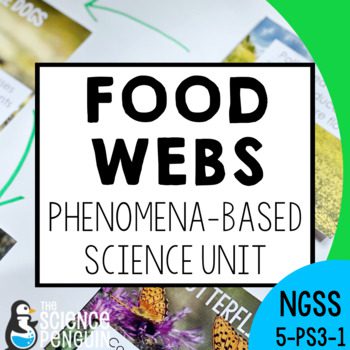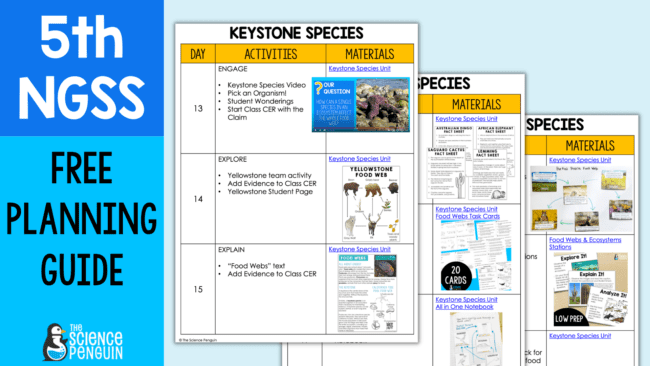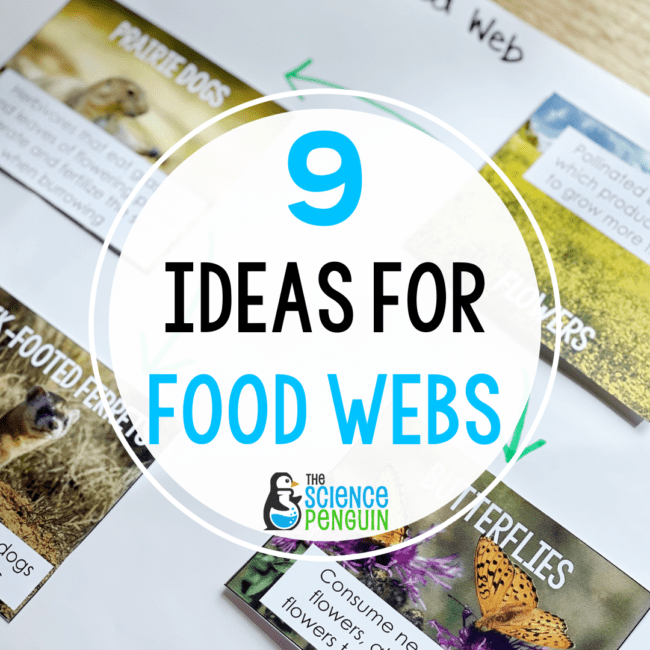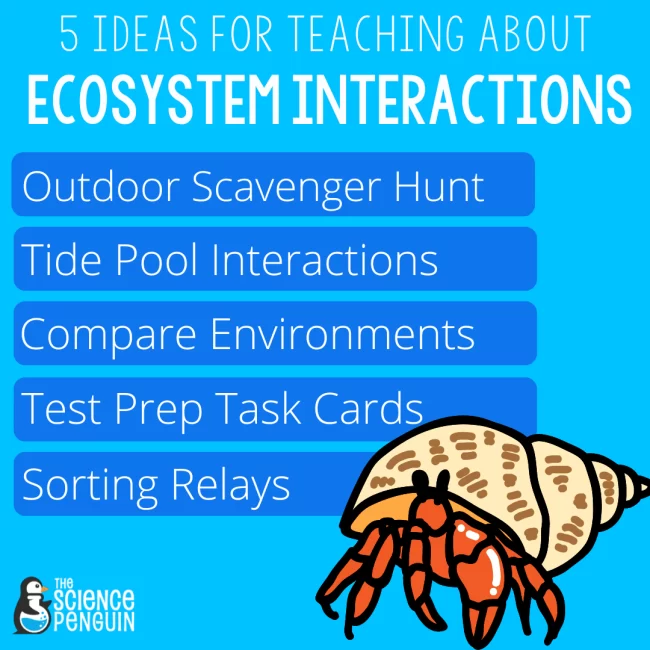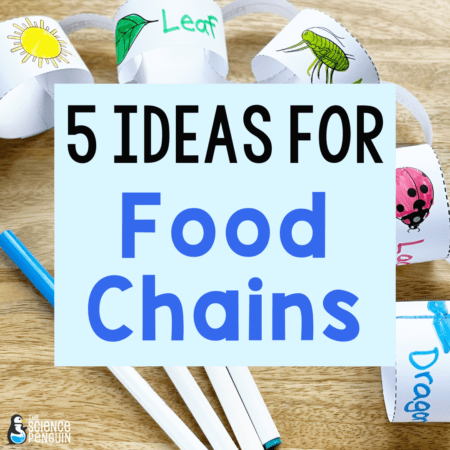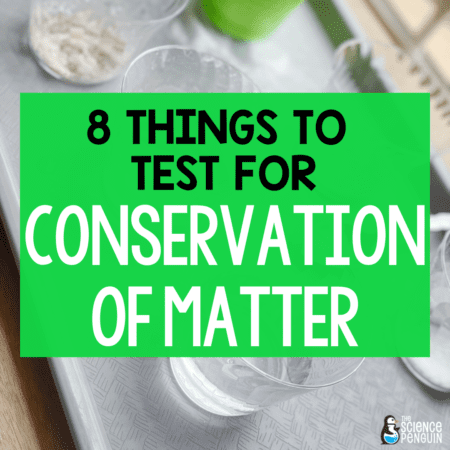
Teaching with phenomena is a key element of the Next Generation Science Standards (NGSS). In 5th grade, students need to use models to show that energy in animals’ food was once energy from the Sun.
NGSS 5-PS3-1 Use models to describe that energy in animals’ food (used for body repair, growth, motion, and to maintain body warmth) was once energy from the sun.
You can teach about food webs in a traditional way. I’ve done it and there’s nothing wrong with it! But you can add a layer of inquiry by anchoring your unit with a pretty cool phenomenon: keystone species.

TIDEPOOLS & KELP FORESTS

ENGAGE
We start off by introducing the phenomenon with a short video we made that shows purple sea stars and tide pools.
We look at our guiding question: How can a single species in an ecosystem affect the whole food web?
Next, students watch a video clip about Bob Paine’s experiment with starfish along the Pacific coast.
Students discuss what they think will happen after sea stars are removed from the tide pools,
They watch the second clip then discuss why the effect was different when other species were removed from the tide pools.
Next we project a page with 4 different organisms: sea otters, kelp, sea urchins, and mussels. Students are asked to pick which organism they think is the keystone species in a kelp forest. They also think about and discuss producers and consumers in this ecosystem.
Don’t worry about right or wrong answer in this activity. It’s just to get students thinking about keystone species.
WOLVES
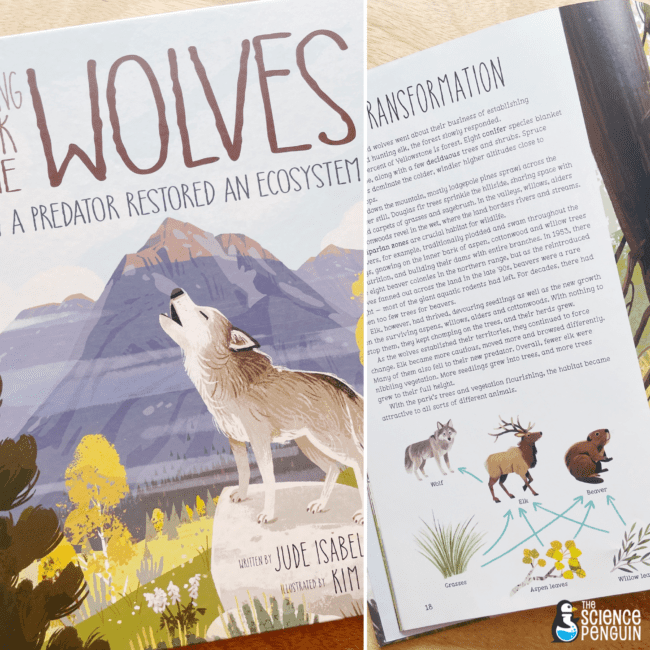
EXPLORE
Our next ecosystem exploration is Yellowstone National Park. In 1995, after decades of no wolves, 41 wolves were reintroduced to Yellowstone National Park. We can easily see the effects of wolves from elk populations to the shapes of meandering rivers.
We start by using the Yellowstone Food Web and questions page to interpret and analyze a simple food web and predict which species is the keystone species. Students watch a video clip about the wolves and continue to answer questions about wolves as a keystone species.
You can even rewatch the video or use a book to learn more about the trophic cascade that occurred.
Resources
Video Clip: Wolves of Yellowstone
Book: Bringing Back the Wolves (aff link)
Science Penguin Resource: Keystone Species Unit
SEA STARS
EXPLAIN
Students read about keystone species and California tide pool food webs which was the first keystone species example introduced.
Science Penguin Resource: Keystone Species Unit
DINGO, ELEPHANT, LEMMING, & SAGUARO CACTUS
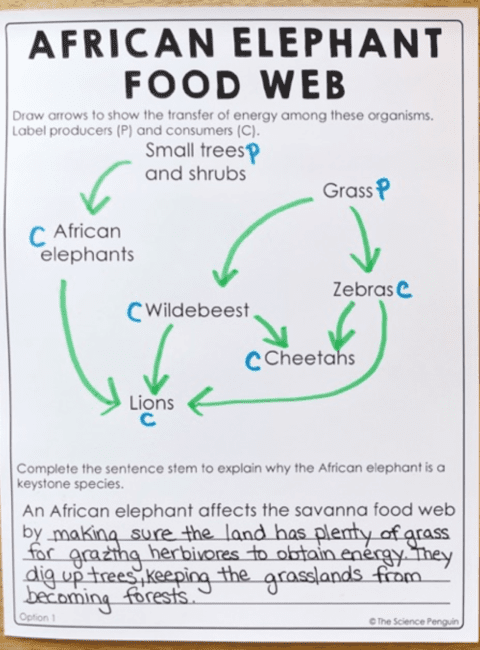
ELABORATE
Teams use provided fact sheets about keystone species around the world to construct a food web for that ecosystem. They must use the food web to explain what makes it a keystone species and present the food web and reasoning to the class.
Science Penguin Resource: Keystone Species Unit
Prairie Dogs
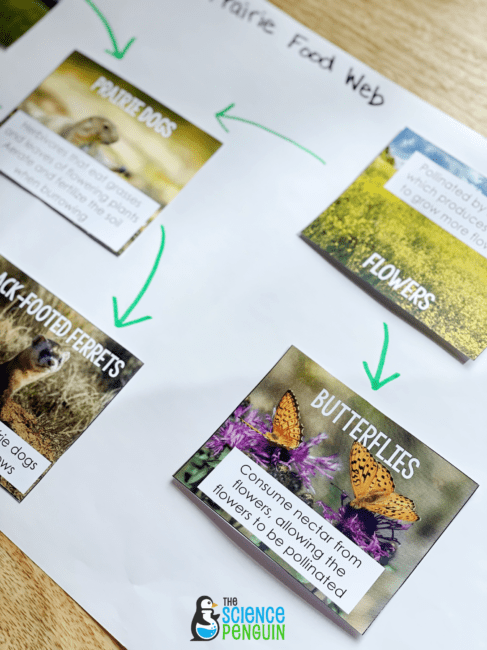
EXTEND
In this team challenge, students use organism cards to create a prairie food web.
After the food web has been checked for accuracy, students discuss which organism would be considered a keystone species. While all organisms are very important to the prairie ecosystem, there is one in particular that is considered a keystone species. You might hint that it is an animal.
You may want to have students vote or organize a simple debate.
Then, we show 2 video clips and ask students to construct an argument, including justification, why the prairie dog is a keystone species.
Resources
Video 1: Prairie Dog Keystone Species
Video 2: Prairie Dogs
Science Penguin Resource: Keystone Species Unit
Ready to Use Teaching Resource
This two-week unit includes:
- printables
- teacher directions
- examples and photos
- video clips
- sample C-E-R
- vocabulary posters
- multiple choice quiz
- short constructed response
See it on TpT: Food Webs Phenomena-based Science Unit


